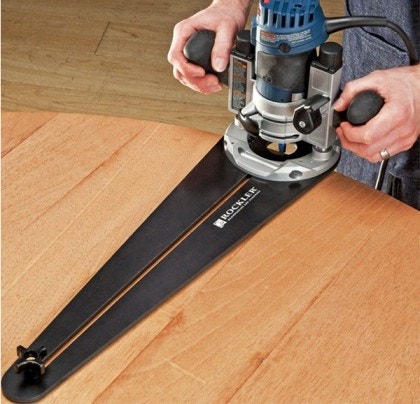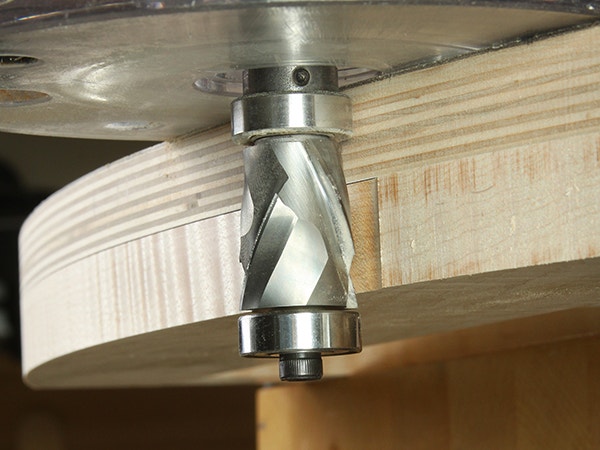I am going to mount shelves in my garage. The back edge will be attached to the wall and one end to a corner. I would like to radius the free end the entire width of the shelf. How do I make a clean, finish cut across the grain? - Byron PJ Cason
Tim Inman: There are lots of ways to do this. For a simple garage shelf — given that time savings might be important and could justify a little less perfection — a nicely drawn pencil line carefully followed by a jigsaw blade or even a band saw blade could be just fine. An old trick, but a good one, is to apply a layer of something like masking tape to the cut line area before scribing the line. This will help prevent edge tearout. Follow the cuts with a little sandpaper, and you’re good to go for the garage.
Here's a little pointer if you use a band saw to cut the radius: Learn to work on the "back" edge of the blade as your support. With a little practice, you can quickly learn to hold the work such that the back edge of the blade is your "rubbing" edge and it will support your work on the front edge or cutting edge. This prevents the cutting edge from wobbling along the pencil line as you cut. It is worth the time taken to learn. This technique will give you much more control and confidence when you cut.
If you prefer more precision here, then I would switch gears and use another technique. A jigsaw or, better yet, a router mounted to a board with the correct radius length can give you a near-perfect cut. You will need to do a little experimental geometry and trial layouts to get it right, but having the cutting tool locked into the exact radius will guarantee a perfect cut. Be sure to consider whether you want the tool to "climb" in the cut or not as you begin your cutting. Do them all the same to make sure they all turn out the same. Some minor sanding might be needed at the end, but probably not. Again, I recommend masking out the cut line area just in case.

Chris Marshall: Tim suggests mounting a router to a board "compass style" to help cut a controlled, even curve, and it’s a great idea. There are also numerous dedicated compass jigs on the market for routers (see photo above), which make it easy to cut circles and even eclipses of many sizes by simply adjusting the jig's settings. But, here's still another radius-cutting option using a router: I might cut the shelf curve I want on a scrap piece to get the arc just right, and use that as a template on my shelf to mark the cut. Saw the waste area just outside of your layout line, then mount the template to your shelf with clamps or carpet tape. Now you can trim off the bit of overhang that's left with a router and either a piloted pattern bit or a flush-trim bit, so the shelf curve matches the template perfectly. It's basic, tried-and-true template routing. If you leave just a tiny bit of overhang to rout away, then select a router bit with either a spiral or shear-cutting angle to it (like the lead photo), the end-grain tearout will be practically nil.

